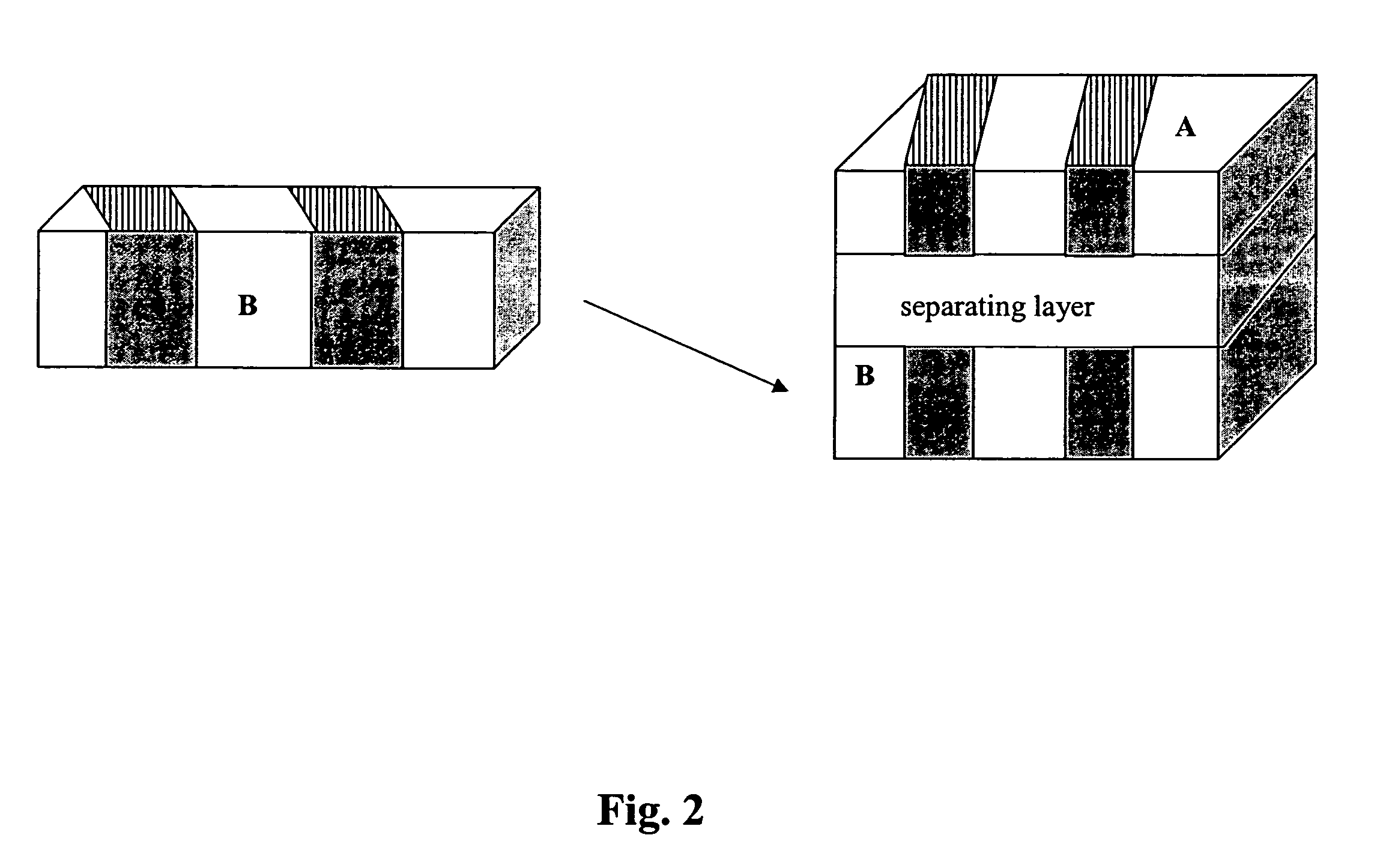Aligned scaffolds for improved myocardial regeneration
a technology of aligned scaffolds and myocardial cells, which is applied in the direction of prosthesis, skeletal/connective tissue cells, bandages, etc., can solve the problems of difficult processing methods, limited success of materials, and failure of the body to integrate and/or remodel these materials into surrounding tissue, etc., to promote cell migration and proliferation, promote cell adhesion and promote cell adhesion
- Summary
- Abstract
- Description
- Claims
- Application Information
AI Technical Summary
Benefits of technology
Problems solved by technology
Method used
Image
Examples
example 1
Method of Making the Scaffold
[0070]The instruments used in this example are pictured in FIG. 1.
[0071]A porcine small-intestine submucosa (SIS) sheet is obtained (vivoSIS™ cell culture disk, Cook Biotech). The disk has a diameter of 12 millimeters and a nominal thickness of 115 micrometers. The disks are sterile, acellular, and endotoxin free.
[0072]The disks are rehydrated with at least two changes of phosphate buffered saline (PBS) pH 7.4. Upon rehydration, the disks become pliable and easily fold upon themselves. The disks are cut into squares and clamped in layers as shown in FIG. 1A at a fixed distance between layers of about 100 micrometers.
[0073]A comb of knives is inserted at one end while another comb of spacers follows the knives. The distances between each knife in the comb of knives are set at a fixed distance of about 30 micrometers. The distance between each spacer in the comb of spacers are set at a fixed distance of about 100 micrometers (width). As the comb of knives ...
example 2
In Vitro Seeded Scaffolds
[0075]The scaffold according to Example 1 is seeded with any cell-type (or combinations of) in vitro. A scaffold is placed in a tissue culture dish or bioreactor with a serum-containing culture medium appropriate for the cells intended for seeding. Generally, cells at a concentration of 1-5×106 cells / ml are added to the dish or bioreactor and incubated for 24-72 hours at 37° C. at 5% CO2.
[0076]For example, embryonic stem cell-derived cardiomyocytes are incubated with a scaffold that is 5 millimeters thick (25 layers) and 2 centimeters square with 106 cells in 25 ml of culture medium. This incubation occurs under shaking at 50 rpm at 37° C. at 5% CO2 for 48 hours. This seeded-scaffold is further cultured in media for ten additional days to allow cell spreading.
[0077]When bioreactors are used for seeding cells onto scaffolds, some examples are: flasks (static or mixed at 50 or 90 rpm) (Bellco, Vineland, N.J.), 6-well dishes mounted on an xyz gyrator operated a...
example 3
Testing of Scaffolds for Cardiac Tissue Repair
[0105]To test the scaffolds of the present invention for the ability to promote cell differentiation and growth, a variety of methods are known in the art and can be used. The methods vary relative to the cell seeded in the scaffold, either in vitro or in vivo. This example provides some methods that can be used to test the scaffold's ability to promote cell growth and differentiation for cardiac tissue using cardiomyocyte cells isolated from heart tissue seeded onto scaffolds according to Example 1.
[0106]For in vitro scaffolds, medium samples (1 mL) are taken at the end of the seeding period (see Example 2) and every two days during cultivation. pH and partial pressures of oxygen (ρ-O2) and carbon dioxide (ρ-CO2) are measured immediately after sampling using a gas blood analyzer (Model 1610, Instrumentation Laboratory, Lexington, Mass.) with an accuracy of 0.1% for pH and 2% for ρ-O2 and ρ-CO2. Cell death and damage during seeding and c...
PUM
| Property | Measurement | Unit |
|---|---|---|
| thickness | aaaaa | aaaaa |
| width | aaaaa | aaaaa |
| thickness | aaaaa | aaaaa |
Abstract
Description
Claims
Application Information
 Login to View More
Login to View More - R&D
- Intellectual Property
- Life Sciences
- Materials
- Tech Scout
- Unparalleled Data Quality
- Higher Quality Content
- 60% Fewer Hallucinations
Browse by: Latest US Patents, China's latest patents, Technical Efficacy Thesaurus, Application Domain, Technology Topic, Popular Technical Reports.
© 2025 PatSnap. All rights reserved.Legal|Privacy policy|Modern Slavery Act Transparency Statement|Sitemap|About US| Contact US: help@patsnap.com


